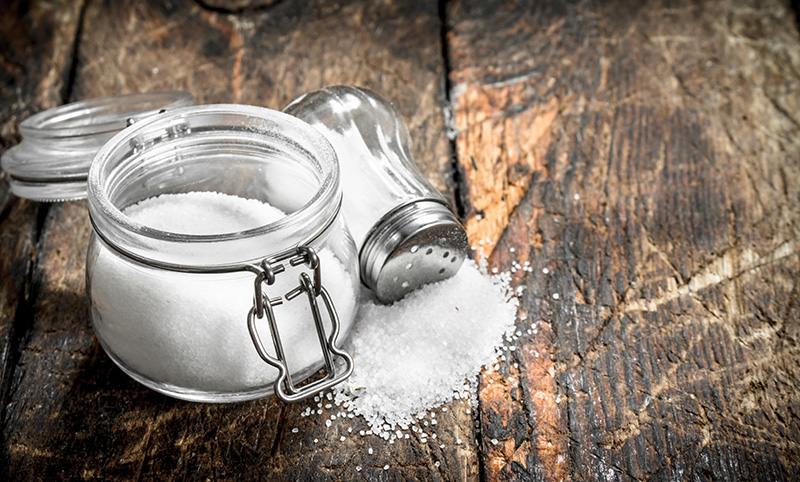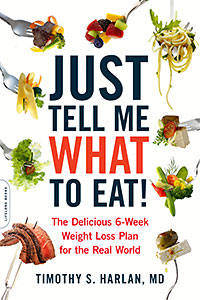More Health and Nutrition Bites
Related
Making the cut - at restaurants
People believe that healthy food just can't taste very good. It's well-known in the restaurant world that if you label a dish "healthy" you'll sell less of it for exactly that reason: it's as if they had labeled the dish "doesn't taste as good as other things on the menu."
When you don't know it's low sodium
Members of that same team of researchers from The Netherlands performed a study recently that expands on their previous research. They recruited 74 adult men and women of clinically normal weight to eat their daily lunches from a buffet at the university's on-campus restaurant nearly every day for 5 weeks.
You CAN get used to less salt!
Not long ago a reader wrote to me and asked what reducing our salt intake was going to prevent. He seemed to think that the need to reduce our sodium intake had not been adequately established and that the issue was not salt itself but rather what the salt was put on (or in).
Health & Nutrition Bites
Get the latest health and diet news - along with what you can do about it - sent to your Inbox once a week. Get Dr. Gourmet's Health and Nutrition Bites sent to you via email. Sign up now!
Salt intake, flavor, and blood pressures

One of my favorite programs is the United Kingdom version of MasterChef. It is the original and I love watching John Torode and Gregg Wallace react to the food that the contestants make. They will often say that the dishes are under-seasoned. For them, that means under-salted.
The thing is that most chefs and people who work in or around restaurants have had their taste buds oversaturated with salt and can't taste the excessive amounts of salt that they put into their food. Last Fall my wife and I ate in a restaurant owned by a celebrity chef. The Chef de Cuisine is someone we had seen on another UK cooking competition, and all of the food in the restaurant was too salty by half.
Years ago I shared a study performed in 1982 that looked at the relationship between the amount of sodium people were used to consuming and how salty they liked their food. In that study, those who were used to a higher amount of sodium in their daily diet went on a reduced-sodium diet.
They discovered that the amount of salt in crackers or soup that gave "maximum pleasantness" of taste to the participants was lower after reducing the amount of salt in their diet. It was clear, at least from this research, that those who habitually consumed more sodium found that foods tasted less salty than those who consumed less sodium.
Today's research supports that conclusion from a different direction - and links it to blood pressures (Brit J Nutr 2020 doi:10.1017/S0007114520002640).
Researchers in Japan recruited adult men and women from two regions in Japan: Osaka, in mid-western Japan (an urban area), and Akita, in northeastern Japan (a rural area), to submit to salt taste testing as part of an ongoing study known as the Circulatory Risk in Communities Study.
The 2223 men and women underwent their taste testing as part of an annual health checkup at which their height, weight, and blood pressures were measured.
The salt taste testing utilized multiple pre-made and validated test strips that the participant held in their mouth for 3 seconds. The initial strip was designed to be a control, with no sodium impregnated in each strip. Subsequent strips had increasing concentrations of sodium impregnated in the strip: 0.1%, 0.2%, 0.4%, 0.6%, 0.8%, 1.0%, 1.2%, 1.4%. and 1.6%.
Two measures were used: first, what the authors called a "perception" measure, which was the percentage where the participant noticed that the strip tasted different from the initial, no-salt strip. Then there was an "identification" measure - the percentage at which the participant could identify the flavor as "salty" as opposed to, say, umami or spicy. (All strips contained nothing but salty flavor and no other taste.)
After noting the participants' thresholds for both perception and identification, the authors correlated those scores with the participants' blood pressures as well as the amount of sodium-laden foods they reported consuming on a regular basis.
Interestingly, the outcomes were different by gender: about 61% of men and 79% of women could detect a difference between the no-salt strip and the strip containing 0.1% sodium. Yet those who could identify that the difference they tasted was a salty flavor was much smaller: between 15% and 24% for men and 24% and 32% for women.
On the other end of the spectrum were those who could detect a flavor difference but could not identify that flavor as "salty": between 30% and 34% of men could not identify a salt concentration of 1.6% sodium while between 16% and 21% of women could not, either.
The authors found that women were better able to detect salty flavors overall, and that for men between 30 and 59 years of age, blood pressures were positively linked with both detection (tasting a difference), perception (knowing the flavor was saltiness), and salt intake.
In short, those who consumed more salty foods were also those who failed to detect difference in flavor in general and salty flavors in particular. Those same people tended to have increasingly higher blood pressures as their minimum flavor detection and recognition levels increased.
What this means for you
To put this simply: Those who tended to consume more salt were less able to taste or identify salty flavors and had higher blood pressures than those who consumed less salt.
The United States' current recommended target is about 2,400 mg of sodium per day. If you are used to consuming too much salt, it seems clear that in time your perception of salty flavor in foods will become accustomed to a lower level of intake: not only will your salt taste buds learn to recognize lower levels of sodium in foods, but it's likely that your blood pressures will adapt as well.
First posted: September 2, 2020

